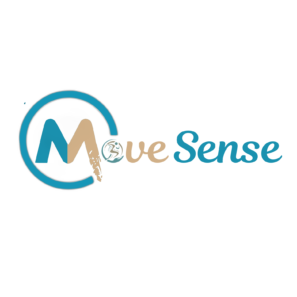Laser Therapy
Are you dealing with an injury or experiencing pain? Interested in a modern, comfortable treatment that leverages advanced technology?
Consider laser therapy treatment.
Laser therapy offers a cutting-edge alternative to traditional pain management methods. It effectively addresses a variety of painful conditions such as arthritis, carpal tunnel syndrome, TMJ disorders, herniated discs, sprains, strains, fibromyalgia, and other inflammatory issues.
Today, laser therapy is increasingly favored because it’s fast, minimally painful, and doesn’t require an overnight hospital stay.
What is Laser Therapy?
LASER stands for Light Amplification by Stimulated Emission of Radiation.
Laser Therapy is a medical approach that uses red and infrared light to enhance the healing of soft tissues, providing relief from both acute and chronic conditions.
In physiotherapy, when the laser light interacts with the skin, photon energy penetrates the soft tissue and engages with various intracellular proteins, promoting normal cell function and accelerating the body’s natural healing processes.
Laser surgery also helps to speed up recovery, often resulting in less pain, bruising, and scarring compared to traditional surgical methods.
- Need Assistance?
(07) 5619-5588
Benefits of Laser Therapy Treatment
The main goal of laser therapy is to prompt cells to perform their normal functions more efficiently and rapidly. Below are several benefits of laser therapy to help you understand its advantages:
Laser therapy utilizes a technique called photobiomodulation. In this process, photons interact with tissue and engage with the cytochrome c complex in mitochondria. This interaction initiates a series of molecular events that enhance cellular metabolism and alleviate pain and inflammation.
Unlike medications, laser therapy offers treatment without any associated side effects.
Laser photons accelerate cellular reproduction and growth by penetrating deeper into tissues. Tendon, ligament, nerve, and muscle cells regenerate more rapidly when exposed to laser light. Additionally, open wounds often show positive responses to laser therapy.
Laser light enhances vascular activity by encouraging the development of new capillaries in injured tissues, which speeds up the healing process and helps wounds close more quickly. After injuries from repetitive motions, cuts, scratches, burns, or surgery, laser therapy can also reduce scar tissue formation.
Laser treatments are generally quick, typically taking between five to ten minutes, though the duration may vary depending on the depth or size of the condition being treated.
High-power lasers can deliver substantial energy rapidly, allowing for efficient therapeutic results.
For those with busy schedules, including both patients and professionals, these fast and effective treatments are highly beneficial.
Laser therapy enhances blood circulation in the body by temporarily dilating blood vessels, which allows for increased blood flow to repair damaged tissues. The heat generated by the laser on the skin helps the blood flow more freely and frequently.
This non-invasive, safe, and effective treatment can significantly alleviate and even eliminate many painful conditions.
At MoveSense, our physiotherapist provides laser physiotherapy at a competitive price.
Our skilled laser therapists are among the best in the area, capable of accelerating healing, reducing pain, and minimizing swelling and inflammation.
FAQ
When a cell is healing, it requires a significant amount of energy and time. Often, cells can become so focused on combating inflammation that they lack the energy needed for effective repair. Lasers can stimulate these cells, boosting their activity to improve performance and speed up the healing process. In cases of nerve damage, laser therapy can help the damaged nerves recover, potentially increasing sensitivity, reducing discomfort, and improving motor function in the affected area.
Laser treatment is available for those suffering from both acute and chronic pain. Athletes can use laser therapy post-training to alleviate muscle soreness.
It is especially effective for sports-related issues like Jumper’s knee, tennis elbow, and Achilles tendonitis. Additionally, lasers can help reduce pain and swelling associated with chronic conditions such as rheumatoid arthritis and osteoarthritis.
No, there is no pain involved. The targeted area may feel slight pressure or warmth, but this sensation is typically soothing rather than uncomfortable.
The laser treatment itself does not hurt or cause pain. The muscles, ligaments, and tendons are gently treated without discomfort.
Laser therapy typically results in quicker healing compared to traditional surgeries. The number of sessions required varies based on the severity and intensity of your pain. Your doctor will create a personalized treatment plan before your initial session.
Patients generally undergo between 8 to 12 sessions, but for more severe or persistent conditions, additional sessions may be needed. Your doctor will advise you on the appropriate number of sessions based on your specific needs.
While you might experience some immediate pain relief, it’s important to recognize that this doesn’t necessarily mean your injury or pain is fully resolved. Your doctor will monitor your progress throughout your treatment, and it’s advisable to schedule a follow-up review three to six months after completing the therapy.
Even if you notice early improvements, complete recovery is essential. Understanding these aspects can give you insight into how laser therapy works. Now, let’s explore the many benefits of laser therapy in more detail.
